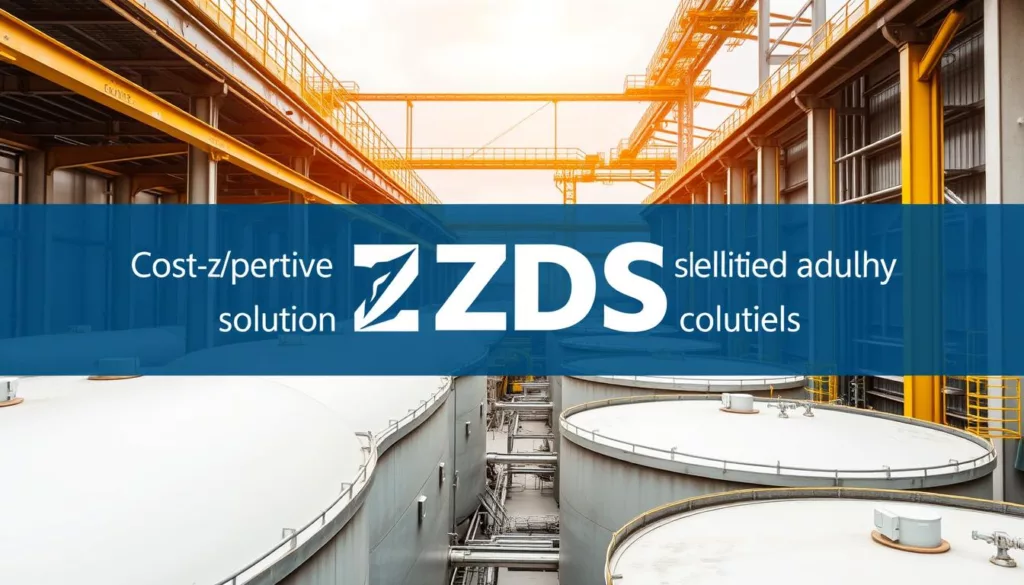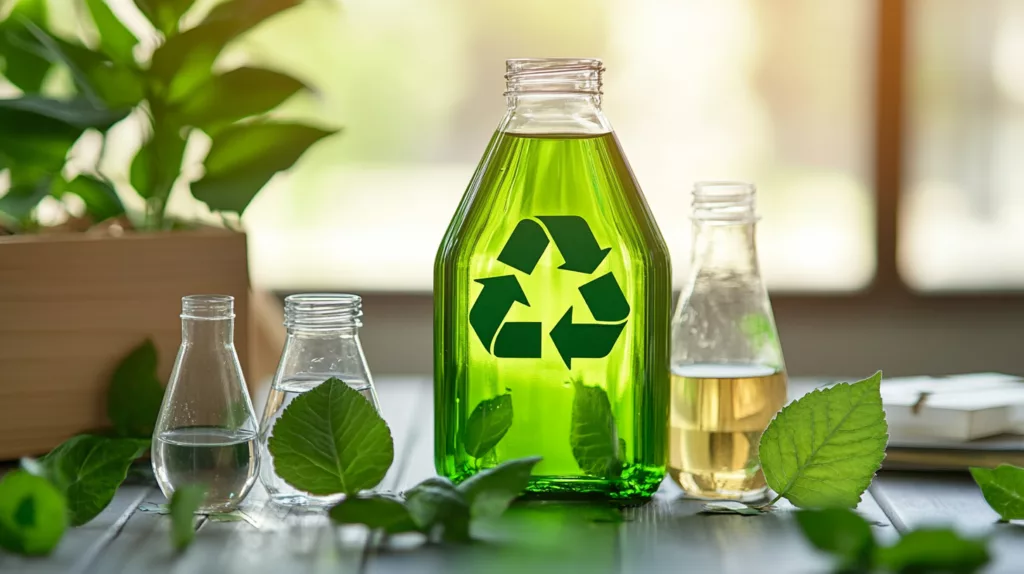In the oil storage industry, safety and integrity of tanks are key. Cost-effective bonding solutions are vital for this. They include high-quality adhesives and sealing products for tank repair. These ensure that tanks are secure and trustworthy. We know the importance of choosing the right products. It’s a balance between cost and technical specs. Our goal is to provide affordable, top-quality bonding items. These are for both manufacturers and DIY fans.
Key Takeaways
- Cost-effective bonding solutions enhance the safety of oil storage systems.
- High-quality tank repair adhesives are essential for reliable bonding.
- Understanding the right oil tank sealing products can ensure long-term performance.
- Economical oil tank bonding products offer a balance between quality and cost.
- Choosing the best tank bonding sealants is vital for maintaining integrity.
Importance of Bonding in Oil Storage Tanks
Understanding the role of bonding in oil storage tanks is crucial. It ensures safety and improves how these tanks work. By preventing the build-up of static electricity, bonding and grounding stop dangerous situations.
Understanding Bonding and Grounding
Bonding means connecting different parts of an oil tank system to each other and the ground. This is key for oil tank safety. It balances electrical charges and lowers the risk of static sparks. Grounding links these parts to the earth, allowing a safe way for electricity to flow.
Benefits of Proper Bonding
Effective bonding measures bring many operational advantages:
- Enhanced safety by reducing fire and explosion risks.
- Better reliability in tank operations.
- More stability, leading to efficiency over time.
Strictly applying bonding principles boosts the performance and dependability of oil storage systems.
Regulatory Requirements
Knowing and following bonding regulations is a must for oil storage operators. There are state and federal rules to keep operations safe. Key guidelines from the EPA and NFPA set specific bonding standards. Following these standards enhances oil tank safety and avoids legal issues.
| Regulatory Body | Key Regulations | Purpose |
|---|---|---|
| EPA | Guidelines for storage tank design | Protect the environment and reduce leaks |
| NFPA | Code 30: Flammable and Combustible Liquids Code | Ensure safe handling and storage practices |
| State Regulations | State-specific bonding requirements | Maintain compliance and enhance local safety standards |
Common Bonding Techniques for Oil Tanks
It’s crucial to know the bonding techniques for oil tanks to ensure safety and comply with regulations. There are three main categories: mechanical, chemical, and electrical bonding methods. Each has its unique purpose and benefits in oil storage.
Mechanical Bonding Methods
Mechanical bonding uses physical parts to make strong connections. Tools and devices used include:
- Clamps
- Jumper wires
- Threaded connections
This method ensures the tank’s safety and integrity. It’s vital to use the right tools for effective bonding.
Chemical Bonding Solutions
Chemical bonding provides another way to bond oil storage tanks. Important elements include:
- Specialized adhesives
- Sealants
These create strong chemical bonds perfect for sealing tanks. Applying these products correctly is key to their success and the tank’s safety.
Electrical Bonding Systems
Electrical bonding aims to prevent electrical hazards. It uses grounding conductors and bonding wires to protect against static electricity. Essential parts include:
- Grounding conductors
- Bonding wires
Using these can make oil tanks safer. It helps maintain a secure storage area that meets safety standards.
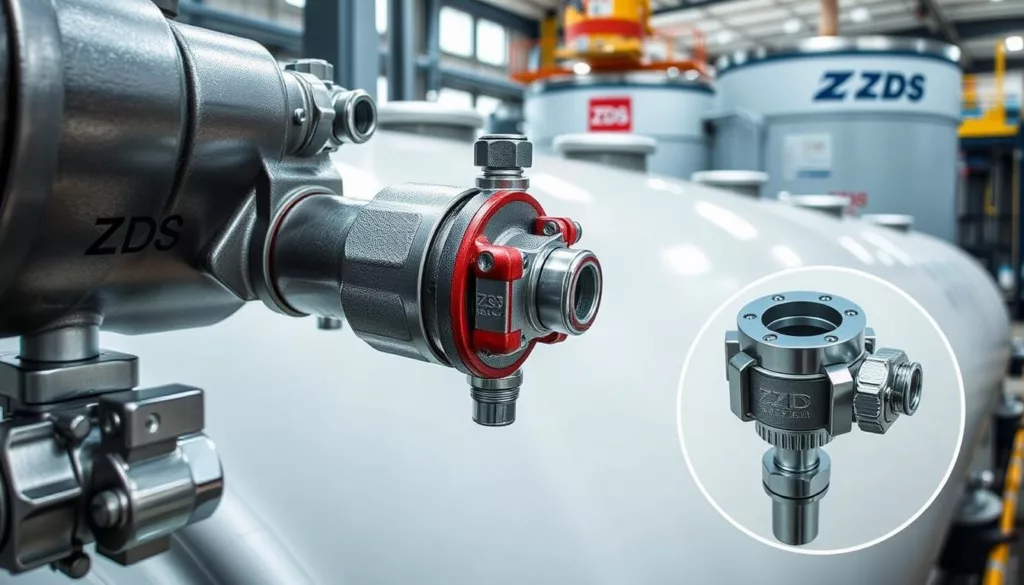
Materials Used in Cost-effective Bonding
Choosing the right materials for bonding is crucial. It ensures the bond performs well. We compare materials like epoxies, polyurethanes, and silicone-based adhesives. These are common in the industry.
Comparing Bonding Materials
We must know the strengths and weaknesses of bonding agents when fixing tanks. Here’s a look at popular materials:
| Bonding Material | Adhesion Strength | Chemical Resistance | Temperature Resistance | Curing Time |
|---|---|---|---|---|
| Epoxy | High | Excellent | Up to 250°F | 1-2 hours |
| Polyurethane | Moderate | Good | Up to 180°F | 24 hours |
| Silicone | Low to Moderate | Fair | Up to 450°F | 24 hours |
Selection Criteria for Bonding Materials
Choosing the right bonding material is vital. There are important factors to consider. These factors ensure a strong, lasting bond.
- Adhesion Strength: This makes sure the bond can handle stress and environment.
- Chemical Resistance: It protects against chemicals in oil storage areas.
- Temperature Variation: The material must work well at different temperatures.
- Curing Time: This influences how quickly and effectively surfaces can bond again.
Benefits of Cost-effective Bonding Solutions
Cost-effective bonding solutions are key in oil storage. They boost safety and efficiency. They offer benefits now and in the future.
Enhanced Safety and Security
Bonding safety improves tank security. It lowers the risk of spills and explosions. Proper bonding protects assets, people, and the public.
It ensures safety regulation compliance. It also boosts public trust in oil storage.
Long-term Cost Savings
Quality bonding solutions save money over time. They lengthen asset life and cut maintenance. This reduces tank repair needs.
This simplifies budget planning. It helps companies use resources better. Lower repair costs show the financial benefits of good bonding.
Reduced Environmental Impact
Environmental care is essential in our industry. Effective bonding solutions reduce leaks. They help us be more eco-friendly.
By choosing sustainable practices, we lessen our ecological footprint. This protects the environment and meets public and regulatory standards.
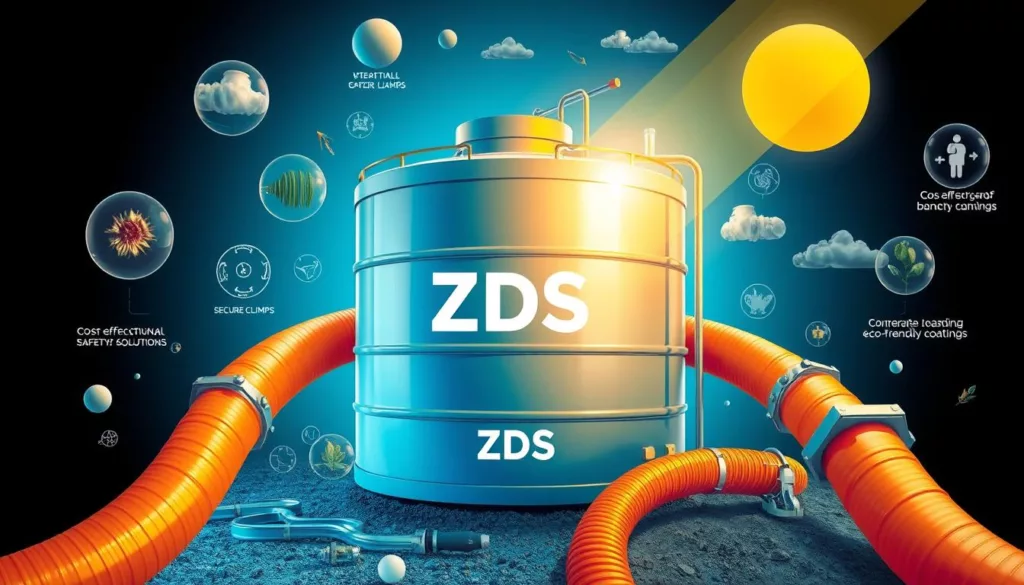
Industry Regulations and Standards
It’s crucial to understand industry rules to keep oil storage tanks safe and efficient. Knowing about oil storage and bonding laws helps operators stay within legal limits. This also protects investments and the environment.
Overview of Relevant Regulations
Many important laws affect how oil storage works. Groups like the American National Standards Institute (ANSI) and the American Petroleum Institute (API) set important guidelines. These rules aim to reduce risks and make storing oil safer. Following these rules closely is necessary, especially where safety mistakes can have big repercussions. Knowing the right bonding rules for different situations helps operators manage their sites well.
Compliance Tip for Operators
To achieve operational success, operators should frequently check their compliance with laws. It’s essential to keep learning about bonding methods to stay up-to-date with oil storage rules. Setting up a regular check-up schedule for bonding systems is a good idea. This not only meets legal requirements but also builds a safety-first attitude among workers. Operators should also look into available resources for bonding best practices to improve their expertise. For more details on high-level bonding options, visit this resource.
Evaluating Your Current Bonding System
Checking your bonding system regularly is key for safe oil storage tanks. It helps find potential issues early. Using different ways to assess bonding helps keep everything running smoothly. Here, we’ll look into how to best check your system and why.
Conducting a Bonding Assessment
To properly assess bonding, follow these steps.
- Perform visual inspections to identify any evident wear or damage.
- Utilize advanced testing methods such as dielectric testing or continuity checks.
- Engage in tank bonding audits to ensure compliance with regulatory standards.
Identifying Weak Points in Existing Systems
Finding where the system might fail is crucial. Common problems occur in certain areas.
- Connections between tank components.
- Grounding systems that may have become compromised.
- Corrosion on bonding materials.
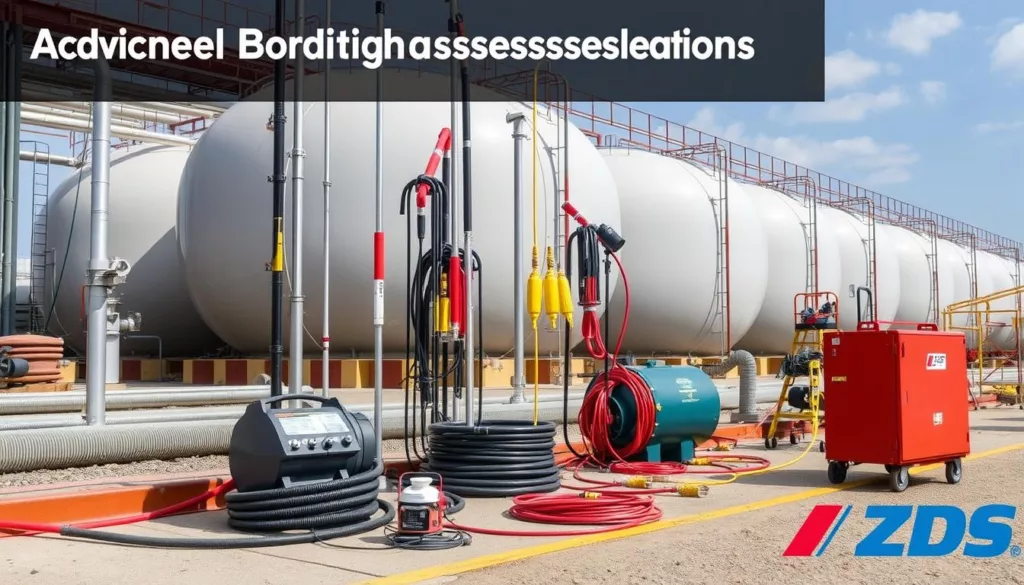
| Bonding Assessment Technique | Description | Advantages |
|---|---|---|
| Visual Inspection | Simple review of all bonding connections and components for physical damage. | Quick identification of visible issues. |
| Dielectric Testing | Measures the insulating properties of materials to ensure proper bonding. | Accurate insight into material performance. |
| Continuity Checks | Tests for electrical continuity between bonded components. | Ensures reliable connections across the system. |
| Tank Bonding Audits | Comprehensive evaluation of the entire bonding system to ensure compliance with regulations. | Identifies hidden weaknesses and adherence to guidelines. |
By using these evaluation techniques, operators can keep their bonding systems top-notch. This ensures safety and reliability in oil storage.
Innovations in Bonding Technologies
The world of bonding solutions for oil storage tanks is changing fast. We’re seeing amazing progress in products that make bonding more efficient and reliable. Let’s look at the newest developments and what the future might hold for bonding tech.
Recent Advancements in Bonding Solutions
Latest advancements in bonding technologies have improved how oil tanks perform. Manufacturers are now using better materials and methods. These bring several advantages:
- High-performance adhesives: The newest adhesives offer stronger chemical resistance and durability. They ensure bonds that last longer.
- Efficient application techniques: New methods in sealing tanks make application faster and easier, cutting down on downtime.
- Smart bonding solutions: Technology now helps in better assessing the strength of bonds. This increases safety overall.
Future Trends in Bonding Technologies
The future looks bright for bonding technologies in the oil sector. We’re expecting to see trends that will change how things are done:
- Automation: Automated processes for bonding will likely lead to more consistent results and less human error.
- Eco-friendly products: There’ll be a move towards materials that are better for the environment. This helps with following green regulations.
- Incorporation of sensors: Intelligent materials with sensors could give instant data on how well bonds are holding. This alerts operators to problems early on.
Selecting a Bonding Solution Provider
Choosing the right bonding solution provider is crucial. You need to look at many things. It’s important to find suppliers that meet your project’s needs. Consider their experience, product range, and past testimonials when searching for reliable suppliers.
Key Factors to Consider
Here are main points to help you pick:
- Experience: Pick someone who’s proven in the field.
- Product Quality: Quality products mean they last longer and work better.
- Support Services: Check the customer and technical support offered.
- Customization: They should meet specific needs with custom solutions.
- Compliance: They must follow industry rules and standards.

Questions to Ask Potential Vendors
When evaluating vendors, you need to ask the right questions. These questions can show if they’re a good match for you:
- What are the main adhesive products you offer?
- Can you show references or case studies from similar jobs?
- What do you do to ensure product quality?
- How do you handle requests for custom products?
- What kind of support do you provide for technical issues after sale?
Understanding these key points helps you make smart choices. A thorough review ensures you partner with suppliers who meet both current and future needs. For more tips on choosing the right bonding materials, check out this link on metal-to-metal bonding.
Case Studies of Successful Bonding Solutions
In the oil storage world, good bonding solutions mean safety and efficiency. Below are two case studies. They show different ways to bond, highlighting their cost-efficiency and innovation.
Case Study 1: A Cost-effective Approach
A medium-sized oil facility had trouble with expensive traditional bonding. They switched to a cheaper, effective bonding solution. This involved using advanced chemical bonding products. These products cut installation costs and offered a strong bond, improving safety.
The results were impressive:
- Maintenance costs went down
- They better met industry rules
- There were less corrosion and failures, making tank repairs more successful
Case Study 2: Innovative Bonding Solutions
In this study, another facility was looking for new solutions to safety and efficiency issues. They chose a cutting-edge bonding technology. This system not only secured connections but also made bonding easier. They tested a lot and adapted their methods, showing how the newest bonding products can work well in real situations.
The main gains were:
- Better operational safety due to more reliable bonding
- Maintenance became faster, saving a lot of time
- They also helped the environment by reducing leaks
| Aspect | Case Study 1 | Case Study 2 |
|---|---|---|
| Budget | Cost-effective bonding solution | Innovative bonding technology |
| Main Benefits | Maintenance costs reduction | Enhanced operational safety |
| Key Innovations | Advanced chemical bonding products | State-of-the-art bonding systems |
| Outcome | Successful tank repairs | Significant efficiency improvements |
Maintenance of Bonding Systems
Keeping bonding systems in good shape is key for safety and trust in oil storage areas. Routine checks help find issues early and stay within the rules. Following regular inspection rules keeps bonding systems working well for a long time.
Regular Inspection Best Practices
To keep bonding systems safe, it’s important to follow certain steps. Here’s what to do:
- Do regular visual checks for signs of damage or rust.
- Use electrical tests to make sure everything is conducting as it should.
- Keep a log of all inspections to monitor how the system is doing over time.
- Plan maintenance based on how much it’s used and the weather conditions.
Troubleshooting Common Issues
Sometimes, even with care, problems with bonding systems can happen. Knowing common issues helps fix them quickly. Here are a few:
- Check for any loose parts that might weaken grounding.
- Look out for rust on the bonding parts, as it lowers their quality.
- Be aware of damage from the environment that can weaken the system’s structure.
Knowing about these issues helps in solving them more effectively. Keeping bonding systems secure not only meets rules but also ensures the safety of oil storage facilities.
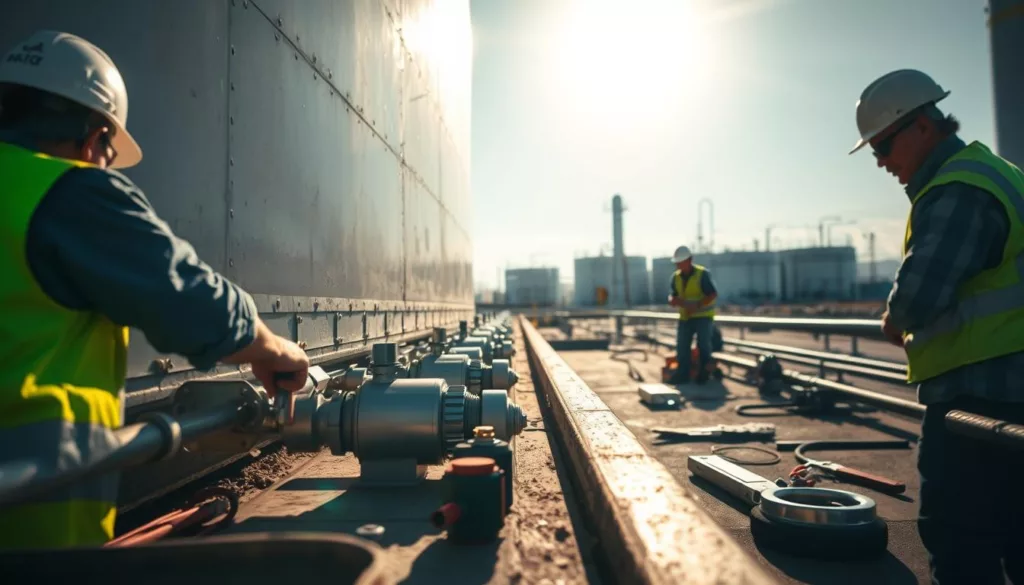
Future of Bonding Solutions in Oil Storage
The oil storage industry is evolving. Future industry standards are changing with new bonding solutions. Industry professionals should keep up with these changes. This includes understanding regulatory updates and the importance of sustainability.
Anticipated Changes in Industry Standards
Technology and safety improvements will change bonding practices. It’s vital for operators to be aware of regulatory changes. This knowledge will help them adapt and meet new compliance and efficiency standards.
Sustainability in Bonding Practices
The push for sustainability is shaping bonding solutions. Using eco-friendly materials is now essential. It matches operational needs with environmental regulations and shows the industry’s dedication to the planet.
This move towards sustainable bonding signifies a new phase. It blends effectiveness with care for the environment. We suggest looking into products like ZDS marine epoxy resin. They perform well under tough conditions and are good for the earth.
| Bonding Solution Type | Sustainability Level | Performance Characteristics |
|---|---|---|
| Chemical Bonding | High | Durable with excellent adhesion |
| Mechanical Bonding | Medium | Strong but may require additional materials |
| Electrical Bonding | Low | Effective but less sustainable options |
Staying updated with these trends is crucial. It helps facilities stay ahead in terms of competitiveness and compliance. This environment is perfect for fostering innovation and ensuring safety.
Conclusion: Choosing the Right Bonding Solution
As we conclude our talk on bonding solutions, remember the key points from our discussion. Choosing the right methods enhances safety and brings long-term advantages for those keeping oil safe. It’s crucial to use the best materials and techniques for reliability in serious situations.
Understanding rules, checking your current systems, and exploring new tech are vital. These steps improve efficiency and safety.
For those in charge of oil storage, assess your needs to find the right bonding solutions. This ensures you get the most out of these techniques. It also makes adding them to your system smooth. Getting advice from experienced vendors is a smart move. For example, ZDS™ offers top-notch plastic adhesives that can meet various needs.
Setting up strong bonding methods is key for success. It helps your systems last longer and work better.
Being strategic about bonding solutions helps deal with strict rules and environmental issues. Improving your methods by evaluating well and choosing innovative options is crucial. This raises safety and efficiency, boosting your overall success. For more on adhesives that fit your projects, visit ZDS™’s wide selection of plastic adhesives here.
FAQ
What are cost-effective bonding solutions for oil storage tanks?
Cost-effective bonding solutions make oil storage safer and more reliable without costing too much. They involve using top-notch adhesives and sealants that are budget-friendly. These products follow safety rules to protect oil tanks.
How do I choose the best tank bonding sealants?
To find the best sealants, think about their stickiness, chemical resistance, and how they handle temperature changes. It’s key to pick certified products from trusted makers. This ensures they work well and last long.
What materials are commonly used in high-quality tank repair adhesives?
Tank repair adhesives usually contain epoxies, polyurethanes, and silicone. These are chosen for their strong stick, resistance to chemicals, and durability in tough conditions. They’re ideal for fixing oil tanks.
Why is bonding important for oil tank safety?
Bonding stops static electricity, preventing fires or explosions. It’s a must for safety because it grounds any electric charges. This makes oil tanks safer to use.
What are some common bonding techniques for oil tanks?
Oil tanks are bonded using methods like mechanical clamps and wires. There are also chemical solutions and electrical systems. These methods boost safety by making sure electricity is properly managed.
How can I assess the effectiveness of my current bonding system?
To check your bonding system, you need visual checks and advanced tests. It’s important to look at the materials’ condition and how they perform. This helps spot any issues early.
What steps should I take to comply with oil storage regulations regarding bonding?
To follow the rules, get to know the standards from organizations like ANSI and NFPA. Training for your team and regular checks of bonding methods keep things safe and up to code.
How can cost-effective bonding solutions lead to long-term savings?
Choosing budget-friendly bonding solutions saves money by reducing repairs and leaks. It also makes tanks last longer. Smart investments in tank care cut down on environmental risks and costs.
What innovations are being developed in bonding technologies for oil tanks?
New bonding tech includes better adhesives and smart materials that adjust to the environment. These innovations improve safety and operation of oil tanks. Automation also makes bonding more efficient.
What should I consider when choosing a bonding solution provider?
Look for a provider with lots of experience, a good product selection, and happy customers. Checking if they meet standards ensures you get a reliable partner for your bonding needs.
Can you provide examples of successful cost-effective bonding solutions?
There are case studies showing how innovative adhesives cut down repair costs. They also made operations safer and more efficient. These examples highlight best practices in the industry for oil storage.


